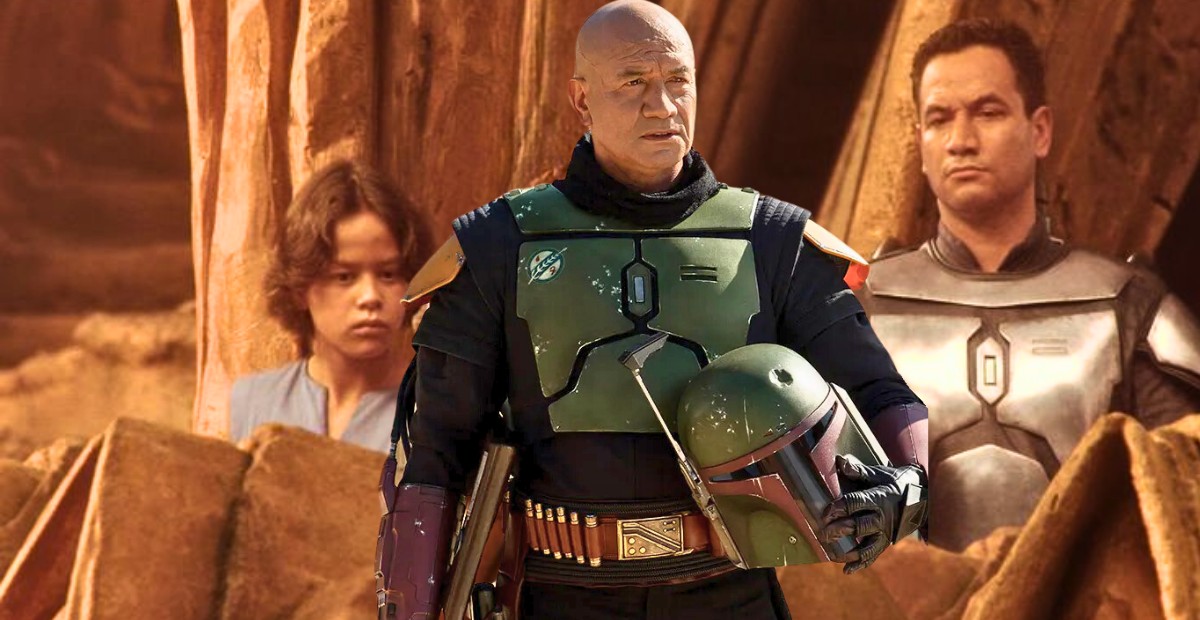The Star Wars prequels brought so much more to the galaxy than just exciting battles and political intrigue.
One of the standout elements that I absolutely love is how they featured several talented Māori actors, giving a sense of diversity and unique representation to the franchise.
These actors not only brought their remarkable skills to the screen, but also helped expand the richness of the Star Wars universe.
Who Are the Māori Actors/Actresses in Star Wars?
Māori actors, coming from the indigenous Polynesian people of New Zealand, have a proud heritage of strength and storytelling, which they’ve beautifully showcased in various roles.
In the prequels, several of these actors left a lasting mark:
- Temuera Morrison – Known for playing Jango Fett in the prequels (and as Boba Fett in Book of Boba Fett), Morrison’s face and voice became the template for millions of clone troopers in Attack of the Clones and Revenge of the Sith.
- Daniel Logan – The young Boba Fett, giving us a glimpse of how the infamous bounty hunter started his journey.
- Bodie Taylor – Another clone trooper, also contributing to the portrayal of the clone army.
- Rena Owen – Played Taun We, the elegant Kaminoan administrator who introduced the clones to Obi-Wan Kenobi.
- Keisha Castle-Hughes – Appeared as Queen Apailana, the ruler of Naboo in Revenge of the Sith.
These actors brought a distinct presence to the films, giving life to important characters and contributing to the complex web of stories that define Star Wars.
I Really Love to See the Māori Actors in Star Wars
There’s something deeply special about how Māori actors were featured in the Star Wars prequels.
Temuera Morrison: A One-Man Army
First, Temuera Morrison’s performance stands out as one of the most memorable in the entire prequel trilogy.
Playing Jango Fett, he brought a rugged yet honorable quality to the character, a bounty hunter who was more than just a villain.
His portrayal of Jango gave depth to the man who became the blueprint for the entire clone army.
What I particularly love is how Morrison didn’t just play Jango, but also every clone trooper.
In a way, he became the face of millions of soldiers, each of whom had unique personalities despite being genetically identical.
The prequels wouldn’t have felt the same without Morrison, who essentially became the backbone of the Republic’s military in the story.
Daniel Logan: The Origins of Boba Fett
Daniel Logan’s role as young Boba Fett was brief, but impactful.
Seeing Boba as a child gave us a deeper understanding of the character, helping us connect with his personal struggles and motivations.
Logan brought an emotional depth to the role, especially in the scenes where Boba mourns the loss of his father, Jango.
Logan’s performance, though limited by screen time, leaves a lasting impression, setting the stage for the iconic character we all know and love.
The Influence of Māori Culture on Star Wars
One of the subtle yet beautiful aspects of having Māori actors in Star Wars is how elements of Māori and Polynesian culture found their way into the galaxy.
Temuera Morrison, in particular, brought cultural pride into his work.
We can see this clearly in The Book of Boba Fett, where Boba Fett’s gaffi stick, a weapon he wields with honor, is inspired by traditional Polynesian war clubs, specifically the Fijian totokia.
This blend of culture shows just how meaningful Māori representation is, not only for showcasing diverse talent but also for enriching the Star Wars universe with real-world influences.
Natural and Genuine Representation
One of the things I admire most about the inclusion of Māori actors in Star Wars is how natural and genuine it feels.
Unlike modern casting practices that sometimes feel forced, the prequels managed to incorporate diverse actors without making it seem like a deliberate agenda.
Temuera Morrison, Daniel Logan, and others were cast because they were the right fit for their roles, not because of a diversity checkbox.
This organic representation added authenticity to the films, allowing the actors to truly shine in their roles.
It’s a wonderful example of how you can embrace diversity while still maintaining the integrity of a story.
Star Wars has always been about different species, planets, and cultures, and featuring Māori actors was a great way to reflect that diversity on screen.
Fun fact: Most Characters in the Prequels Are Played By a Maori Actor
Thanks to Jango Fett being the DNA source for the Republic’s entire clone army, every single clone trooper in the galaxy is technically Māori. Yep, Temuera Morrison didn’t just play one character — he played millions.
So next time you watch the clone troopers charging into battle, remember: that’s one massive extended whānau (family) from New Zealand holding the line for the Republic!

